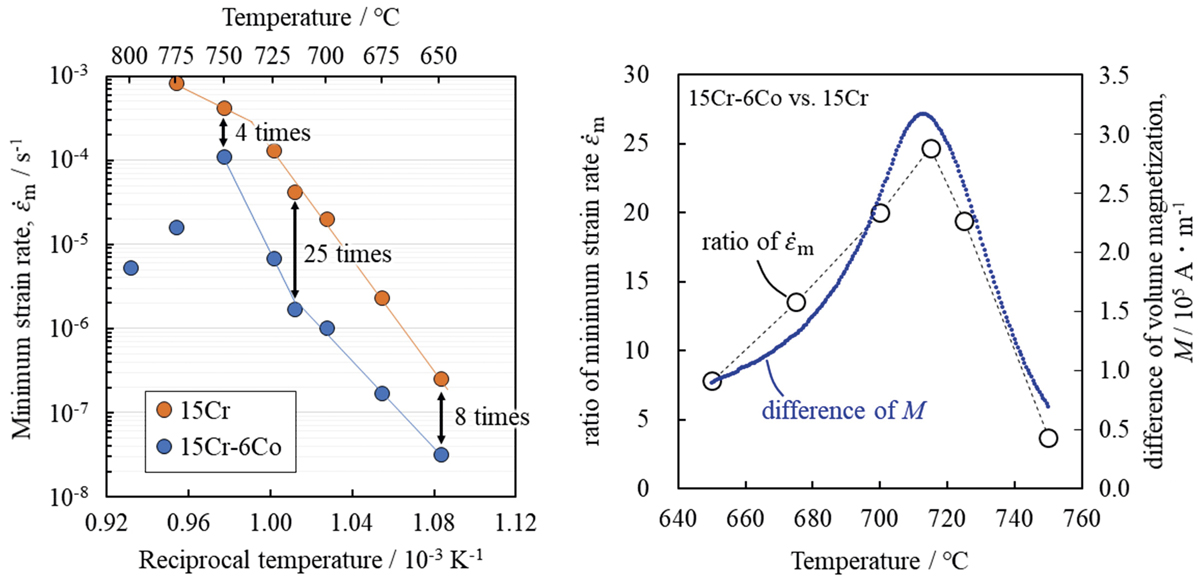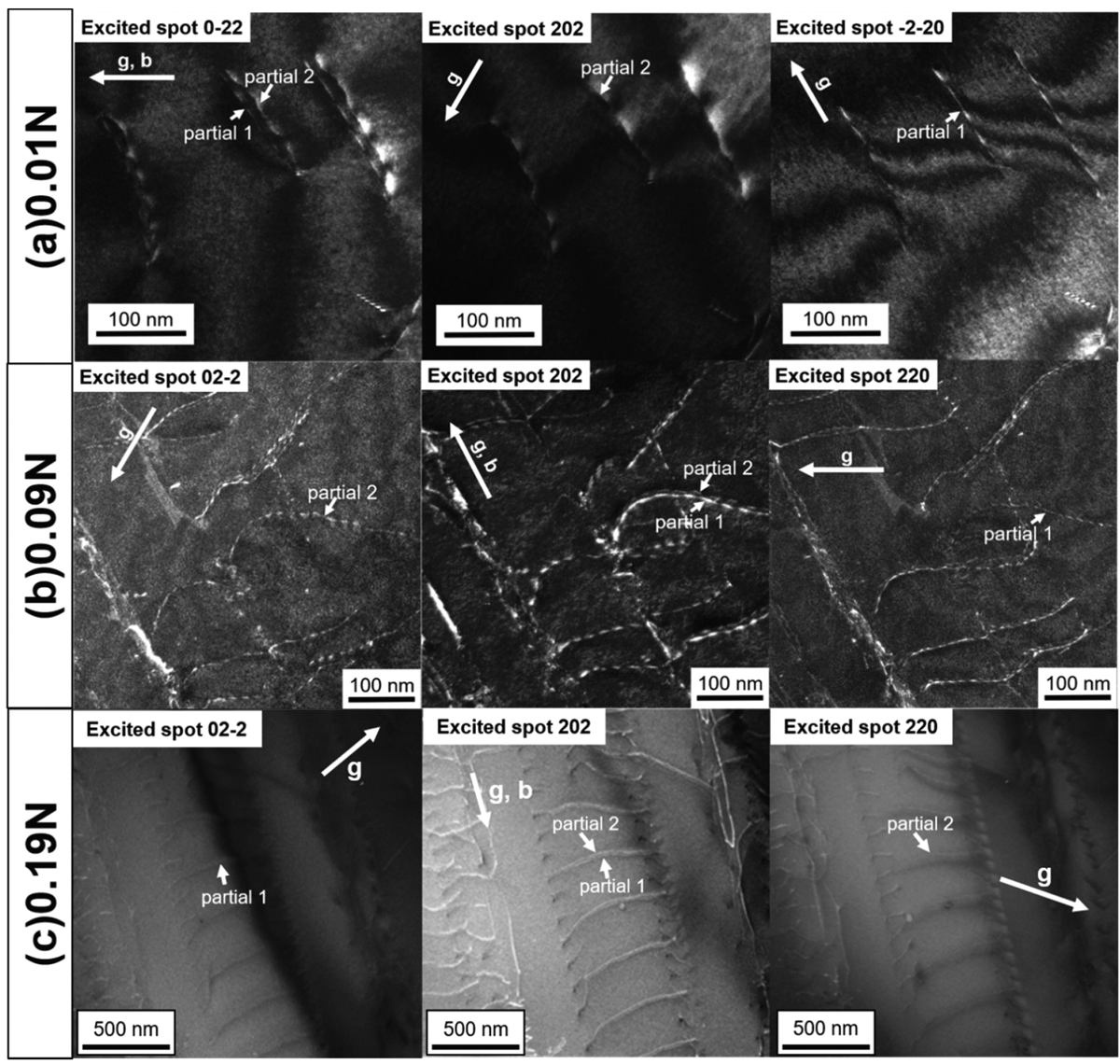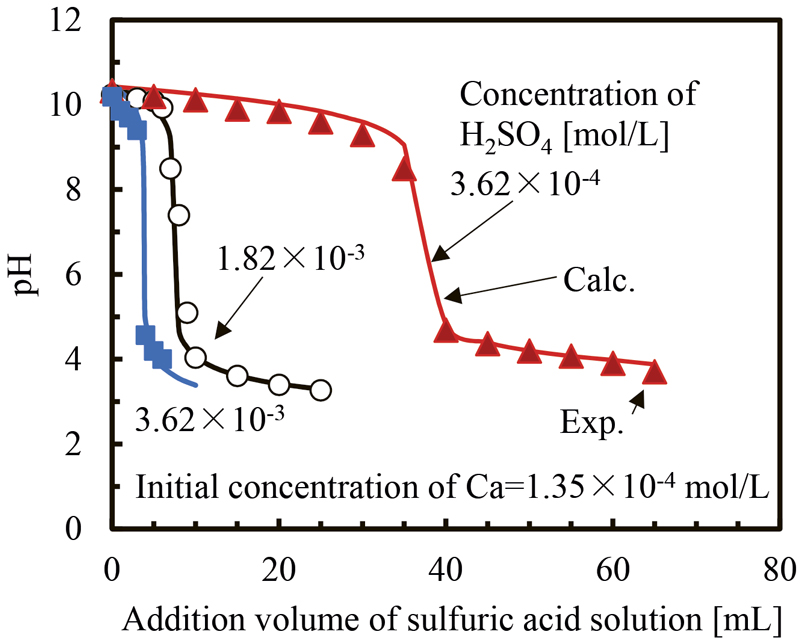
- |<
- <
- 1
- >
- >|
-
2020 年 106 巻 11 号 p. Cover-
発行日: 2020/11/01
公開日: 2020/10/31
ジャーナル オープンアクセスPDF形式でダウンロード (658K) -
2020 年 106 巻 11 号 p. Contents-
発行日: 2020/11/01
公開日: 2020/10/31
ジャーナル オープンアクセスPDF形式でダウンロード (4205K) -
2020 年 106 巻 11 号 p. Editorial-
発行日: 2020/11/01
公開日: 2020/10/31
ジャーナル オープンアクセスPDF形式でダウンロード (226K)
-
磯部 浩一2020 年 106 巻 11 号 p. 777-787
発行日: 2020年
公開日: 2020/10/31
[早期公開] 公開日: 2020/07/21ジャーナル オープンアクセス HTMLImportant large components such as rotors for power generation steam turbines, pressure vessels and reaction vessels are manufactured by the ingot casting. However, it is difficult to manufacture the materials with sufficient properties due to macro-segregation of ingots.
For the purpose of developing effective and versatile macro-segregation countermeasures in the casting of large steel ingots for manufacturing large parts for power plants, the insert casting in vacuum atmosphere, in which a core material with the same composition as the base steel is placed at the center of the steel ingot, was studied. The effectiveness of the proposed insert casting as a macro-segregation countermeasure was verified in laboratory experiments. In addition, it has been clarified that good bonding between the core material and the base material can be realized even under conditions where bonding by normal insert casting in air atmosphere is difficult.
The smelting behavior of the core material and the solidification behavior of the molten steel in the experiments of macro-segregation reproduction casting and the insert casting were analyzed by the direct finite difference method. The mechanism by which this method suppresses the formation of macro-segregation and the solidification conditions for the suppression, the reasons and conditions for good bonding in this insert casting are clarified by the analyses.
Furthermore, in the experiments of insert casting, the cause of internal cracks generated in the solidified shell on the core material surface was considered, and guidelines for preventing the internal cracks were presented.
 抄録全体を表示PDF形式でダウンロード (10365K) HTML形式で全画面表示
抄録全体を表示PDF形式でダウンロード (10365K) HTML形式で全画面表示
-
山﨑 重人, 光原 昌寿, 中島 英治2020 年 106 巻 11 号 p. 788-798
発行日: 2020年
公開日: 2020/10/31
[早期公開] 公開日: 2020/06/26ジャーナル オープンアクセス HTMLIn this study, the relation between the change of the magnetic properties and the creep strength with the addition of Co was investigated for ferritic steel containing 15 mass%Cr. Co addition up to 6 mass% hardly contributes to solid solution strengthening and precipitation strengthening at room temperature. However, in the range of 650ºC to 750ºC, it was confirmed that the addition of Co was effective for the creep strengthening because the steel with a larger amount of Co had higher creep strength. This creep strengthening is explained by a reduction in the diffusion rate associated with a change in magnetic properties by Co addition. The increase of the volume magnetization of the steel with increase of Co amount in the temperature range from room temperature to about 800ºC was confirmed. Comparing the difference in volume magnetization and the ratio of creep strain rate for steels with different amounts of Co, a clear correlation was found between the values. That is, at the temperature at which the difference in volume magnetization becomes maximum, the peak of the creep strain rate ratio was observed. This result is explained as follows. In a low temperature region where the magnetization is large or in a high temperature region above the Curie point of both steels, there is no significant difference in the creep strength between them. However, in the temperature where one steel loses the ferromagnetism but the other steel maintains ferromagnetism, a significant difference in the creep strength was observed.
 抄録全体を表示PDF形式でダウンロード (7668K) HTML形式で全画面表示
抄録全体を表示PDF形式でダウンロード (7668K) HTML形式で全画面表示 -
古谷 佳之2020 年 106 巻 11 号 p. 799-806
発行日: 2020年
公開日: 2020/10/31
ジャーナル オープンアクセス HTMLGigacycle fatigue tests were conducted on high-strength steels whose Mn and S contents were so high as to be close to upper limits of the JIS standard. Three types of materials were prepared with different working ratios. The fatigue strengths were in order of the working ratios, indicating that the high working ratios improved the fatigue strength. All specimens ended in internal fractures mostly originating from MnS. The MnS observed on the fracture surface was largely elongated in the cases of the materials with high wording ratios. ODAs (Optically Dark Areas) were then observed at around the center of the elongated MnS, meaning that small internal cracks were formed there. Although the shapes of the MnS were very complicated, the sizes were approximated by using ellipses which covered the whole MnS. When the MnS was largely elongated, the length l was cut off at four times of the width W, i.e., l = 4W, based on the results of Makino’s fracture mechanics analysis. The measured MnS sizes were applied to analysis by using a previously derived prediction, comparing the effects of MnS with those of oxides. As the result, it was suggested that the MnS was more harmful to the fatigue strength than the oxides. This was probably attributable to the properties of the MnS, while too large number of the MnS possibly reduced the fatigue strength.
 抄録全体を表示PDF形式でダウンロード (3086K) HTML形式で全画面表示
抄録全体を表示PDF形式でダウンロード (3086K) HTML形式で全画面表示
-
木下 惠介, 田中 泰明, 澤田 英明, 潮田 浩作2020 年 106 巻 11 号 p. 807-815
発行日: 2020年
公開日: 2020/10/31
ジャーナル オープンアクセス HTMLThe carbon solubility limit in bcc-iron in equilibrium with cementite at 973 K was estimated by exploiting the age-hardening behavior of a quenched specimen at 323 K and Bayesian inference. The cold-rolled steel containing 0.045 wt% carbon was subjected to decarburization annealing at 973 K in a salt bath for different times up to 10 hours; subsequently, they were water-quenched. These specimens showed carbon contents of 0.005 to 0.045 wt% depending on the annealing time. The quenched specimens were kept at 323 K in a silicone oil bath and the Vickers hardness was sequentially measured to evaluate an age-hardening curve. The maximum hardness of each aging curve showed the following changes with carbon content: when the carbon content decreased from 0.045 wt%, the hardness showed a constant value up to certain carbon content (Region I), decreased with further decreases in the carbon content (Region II), and finally showed a constant value again. Bayesian inference for the above relation was performed by a Markov chain Monte Carlo method. The boundary between Region I and Region II was rigorously estimated. The 95% confidence interval at the boundary between Region I and Region II was determined to be 0.023 ± 0.003 wt%. Based on the strengthening mechanism for each region, the above value was inferred to be the solubility limit of carbon in ferrite equilibrated with cementite at 973 K.
 抄録全体を表示PDF形式でダウンロード (1429K) HTML形式で全画面表示
抄録全体を表示PDF形式でダウンロード (1429K) HTML形式で全画面表示 -
河原 康仁, 寺西 亮, 多久島 睦子, 濱田 純一, 金子 賢治2020 年 106 巻 11 号 p. 816-825
発行日: 2020年
公開日: 2020/10/31
ジャーナル オープンアクセス HTMLThe stacking-fault energies (SFE) were measured by weak-beam TEM method, and deformation mechanisms in room and high temperature were characterized in terms of the effect of nitrogen addition on SFE in Si-added austenitic stainless steel (Fe-19%Cr-13%Ni-0.05%C-3%Si-x%N). Nitrogen addition resulted in decrease of SFE and changing the dislocation configuration from tangled to planar in room temperature. In high temperature, nitrogen addition resulted in the increase of dislocation density in the subboundary by the decrease of SFE. These results indicated that addition of nitrogen contributed to room and high temperature strength because of the decrease of SFE.
 抄録全体を表示PDF形式でダウンロード (3175K) HTML形式で全画面表示
抄録全体を表示PDF形式でダウンロード (3175K) HTML形式で全画面表示 -
増村 拓朗, 浦中 祥平, 松田 恭輔, 高木 節雄, 土山 聡宏2020 年 106 巻 11 号 p. 826-834
発行日: 2020年
公開日: 2020/10/31
ジャーナル オープンアクセス HTMLTo calculate the dislocation density of tempered low-carbon martensitic steels (Fe-0.15%C alloy) by the direct-fitting/modified Williamson-Hall (DF/mWH) method, the unknown parameter A in tempered martensite was investigated. In the DF/mWH method, the dislocation density ρ is defined as ρ=2φ2/(πA2b2). Here, φ and b correspond to the slope of the DF/mWH plot and the magnitude of the Burgers vector, respectively. In low-carbon martensitic steels tempered at 573 - 873 K, φ and ρ were estimated by the DF/mWH method and the modified Williamson-Hall/Warren-Averbach method, respectively. As a result, these parameters decreased with increasing tempering temperature. By substituting φ and ρ in the above equation, the parameter A can be obtained as a function of the tempering parameter λ as follows:
A = –1.53 × 10−5 × λ + 0.982
The parameter A in low-carbon martensitic steels tempered at 573 - 873 K for 18 ks was calculated to be 0.7 - 0.8. Using the parameters A and φ obtained by the DF/mWH method, dislocation density ρ can be easily estimated.
 抄録全体を表示PDF形式でダウンロード (1873K) HTML形式で全画面表示
抄録全体を表示PDF形式でダウンロード (1873K) HTML形式で全画面表示 -
増村 拓朗, 谷口 大河, 浦中 祥平, 平嶋 一誠, 土山 聡宏, 丸山 直紀, 白幡 浩幸, 植森 龍治2020 年 106 巻 11 号 p. 835-843
発行日: 2020年
公開日: 2020/10/31
ジャーナル オープンアクセス HTMLElectrical resistivity of low-carbon martensitic steels was measured to estimate the carbon concentration in solid solution. Since electrical resistivity is influenced not only by solute carbon but also by substitutional elements, lattice defects and second phase, the effects of these factors need to be subtracted from total electrical resistivity, in order to obtain the accurate solute carbon concentration by this method. As a result, the effects of dislocations and grain boundaries were much smaller than that of solute elements, being only 1 - 2% of the measured electrical resistivity, in martensitic steel. On the other hand, substitutional elements and retained austenite were found to be significantly effective. By subtracting these effects from the measured value, the change in electrical resistivity due to solute carbon, Δρsol.C, could be formulated as a function of the carbon concentration in solid solution of martensite, Csol, as follows:
Δρsol.C [mΩmm] = 0.25 × Csol [mass%]
The estimated solute carbon concentration was confirmed to correspond to the directly measured value by atom probe tomography.
 抄録全体を表示PDF形式でダウンロード (3513K) HTML形式で全画面表示
抄録全体を表示PDF形式でダウンロード (3513K) HTML形式で全画面表示
-
丸岡 大佑, 村上 太一, 葛西 栄輝2020 年 106 巻 11 号 p. 844-850
発行日: 2020年
公開日: 2020/10/31
ジャーナル オープンアクセス HTMLSelf-healing function in ceramic-based composites is one of unique characteristics to improve the strength reliability. In this study, such a strength recovery phenomenon of 5 vol% Fe particle/2 mol% Y2O3/Mullite composite was investigated at various heat treatment temperatures.
Vickers indentation were conducted with dense rectangular samples. Samples were heat treated at 700 -1000°C for 1 h in air or Ar-3%H2 atmosphere and then 3-point bending test was carried out at room temperature. Peaks of hematite were identified in the XRD profiles of the samples after heat treatment in air. Surface cracks mostly disappeared due to formation of the oxidation product, i.e., particle-like hematite formed by the heat treatment at 900°C in air for 1 h. Further, needle-like hematite formed and penetrated into the sample surface by the heat treatment at 1000°C. While, oxide formation was not observed for the sample treated in Ar-3%H2 atmosphere. The bending strengths of the as-polished and as-cracked samples were 334 and 99 MPa, respectively. Recovery rate is increased with increasing heat treatment temperature up to 900°C. Heat-treatment at 900°C for 1 h resulted in a recovery of the bending strength up to 262 MPa. While, bending strengths of the samples treated at 1000°C for 1 h air was 204 MPa. It appears that needle like hematite degrades mechanical properties of the samples. Bending strengths of the samples treated at 900°C for 1 h air was 112 MPa as well as as-cracked sample due to no formation of oxidation product.
 抄録全体を表示PDF形式でダウンロード (1247K) HTML形式で全画面表示
抄録全体を表示PDF形式でダウンロード (1247K) HTML形式で全画面表示
-
横山 誠二, 世山 奨大, 安池 俊也, 笹野 順司2020 年 106 巻 11 号 p. 851-857
発行日: 2020年
公開日: 2020/10/31
ジャーナル オープンアクセス HTMLIt has been suggested that the eluate from steelmaking slag has a buffering effect. However the mechanism of the buffering action has not been elucidated. The slag eluate contains various elements such as Ca, Mg, Si, Al, and so on. CO2 in air influence pH. Therefore, in this study, we performed a model experiment in which an aqueous solution of sulfuric acid or nitric acid, which is a representative acid of the acid rain, was added to an aqueous solution containing Ca or Mg in Ar. Its solution was prepared from its hydroxide and ultrapure water. The pH behavior of the solution was investigated to clarify the factors which determined the pH. When the acid solution was added to the solution containing Ca or Mg, pH decreased gradually. At a certain amount of addition of the acid solution, the pH decreased steeply, and, subsequently, decreased gradually. The pH of the solution containing Ca or Mg was determined by the charge balance of ions in the solution. Those two gradual decreases in pH corresponded buffering action. This was caused by the reaction of water dissociation. The equivalence point was the point where concentration of Ca2+ or Mg2+ was equal to the concentration of SO42–, or twice that of NO3–. The pH at this point was seven. The sharp pH change occurred at pH of approximately seven.
 抄録全体を表示PDF形式でダウンロード (1462K) HTML形式で全画面表示
抄録全体を表示PDF形式でダウンロード (1462K) HTML形式で全画面表示 -
佐藤 広志, 奥村 圭二2020 年 106 巻 11 号 p. 858-866
発行日: 2020年
公開日: 2020/10/31
[早期公開] 公開日: 2020/07/01ジャーナル オープンアクセス HTMLThe chlorination and volatilization behavior of zinc was investigated by the reaction between ZnO, ZnFe2O4 and CaCl2. Experiments were conducted in a nitrogen atmosphere by using horizontal electric furnace. As a result of changing the ratio of zinc oxide to zinc ferrite at 1000ºC, it was expected that ZnO and ZnFe2O4 were chloride volatilized at the same time. In the kinetic study at 950ºC-1030ºC, Jander’s equation showed the experimental result well in the reaction system of this study, and the activation energy was 237 ± 18 kJ / mol. It was also found that carbon influenced the reaction product determination. FeO and CaFe2O4 were formed in the presence of carbon, and Ca2Fe2O5 was formed in the absence of carbon.
 抄録全体を表示PDF形式でダウンロード (1423K) HTML形式で全画面表示
抄録全体を表示PDF形式でダウンロード (1423K) HTML形式で全画面表示
-
高木 節雄, 増村 拓朗, 土山 聡宏2020 年 106 巻 11 号 p. 867-870
発行日: 2020年
公開日: 2020/10/31
ジャーナル オープンアクセス HTMLIn pure iron, the Young’s modulus ratio E100/Ehkl in single crystal is expressed as follows as a function of the orientation parameter Γ: E100/Ehkl=1–1.6063Γ. Under the condition that this relationship stands up on commercial ferritic and martensitic steels with various chemical composition and Poisson’s ratio is also identical at 0.291, the elastic stiffness cij was calculated as follows in connection with Young’s modulus Ep of poly crystal ferritic steels: c11=1.0970Ep, c12=0.6477Ep, c44=0.5424Ep. As a result, the elastic stiffness ratio c12/c44 and the anisotropy parameter Ai (=2c44/(c11–c12)) are given at 1.194 and 2.414 independent on the value of Ep, respectively. The contrast factor Ch00 and the parameter q, that are required for the dislocation analysis by the modified Williamson-Hall method, are represented as follows as a function of the screw component S in dislocation: Ch00=0.263+0.044×S and q=1.382+1.27×S.
 抄録全体を表示PDF形式でダウンロード (593K) HTML形式で全画面表示
抄録全体を表示PDF形式でダウンロード (593K) HTML形式で全画面表示
- |<
- <
- 1
- >
- >|